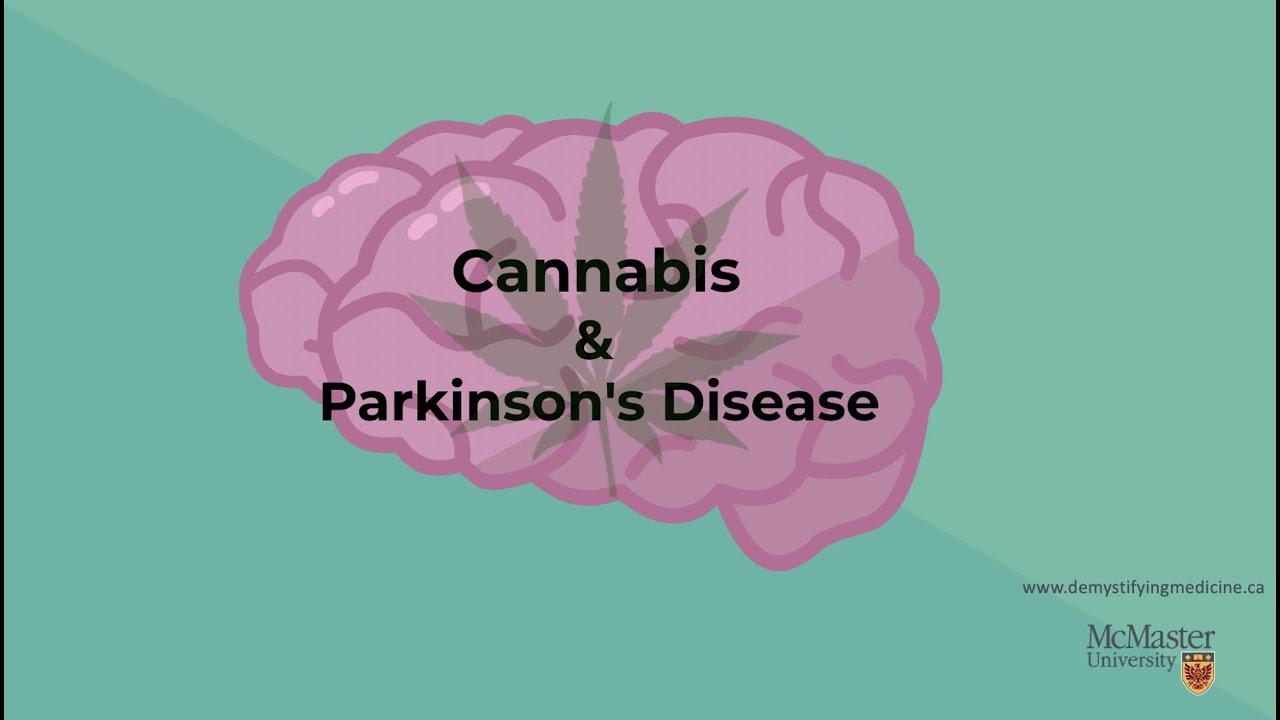Parkinson’s disease, also known as PD, is the second most common neurodegenerative disorder. The disease is characterized by a loss of dopamine-producing neurons in the substantia nigra, which is an area of the brain responsible for movement. Cannabis, specifically CBD, has shown promise in treating some of the symptoms of PD. In this video we will define Parkinson’s disease and cannabis, explain how cannabis can help with PD, and physician perspectives on prescribing cannabis.
This video was created by Demystifying Medicine students Simran Matharu, Mahek Minhas and Micaela McNulty in collaboration with the McMaster Demystifying Medicine Program
Copyright McMaster University 2021
For more information visit:
https://www150.statcan.gc.ca/n1/pub/82-003-x/2014011/article/14112-eng.htm
Time Stamps:
Introduction/What is Parkinson’s Disease? → 00:00 – 01:23
What is Cannabis? → 01:24 – 02:34
How Can Cannabis Help With Parkinson’s? → 02:35 – 05:09
Physician Perspectives → 05:10 – 07:19
Conclusion → 07:20 – 07:52
References:
Bega, D., Simuni, T., Okun, M. S., Chen, X., & Schmidt, P. (2016). Medicinal cannabis for Parkinson’s disease: Practices, beliefs, and attitudes among providers at national Parkinson Foundation centers of excellence. Movement Disorders Clinical Practice, 4(1), 90-95.
Benner, E. J., Banerjee, R., Reynolds, A. D., Sherman, S., Pisarev, V. M., Tsiperson, V., Nemachek, C., Ciborowski, P., Przedborski, S., Mosley, R. L., & Gendelman, H. E. (2008). Nitrated alpha-synuclein immunity accelerates degeneration of nigral dopaminergic neurons. PloS one, 3(1), e1376.
Clapper, J. R., Mangieri, R. A., & Piomelli, D. (2009). The endocannabinoid system as a target for the treatment of cannabis dependence. Neuropharmacology, 56, 235–243.
de Lau, L. M., & Breteler, M. M. (2006). Epidemiology of Parkinson’s disease. The Lancet Neurology, 5(6), 525–535.
Edelstein, O. E., Wacht, O., Isralowitz, R., Reznik, A., & Bachner, Y. G. (2020). Beliefs and attitudes of graduate gerontology students about medical marijuana use for Alzheimer’s and Parkinson’s disease. Complementary Therapies in Medicine, 52, 102418.
Gardiner, K. M., Singleton, J. A., Sheridan, J., Kyle, G. J., & Nissen, L. M. (2019). Health professional beliefs, knowledge, and concerns surrounding medicinal cannabis – A systematic review. PLOS ONE, 14(5), e0216556.
Hauser, R. A., Rascol, O., Korczyn, A. D., Jon Stoessl, A., Watts, R. L., Poewe, W., De Deyn, P. P., & Lang, A. E. (2007). Ten-year follow-up of Parkinson’s disease patients randomized to initial therapy with ropinirole or levodopa. Movement disorders: official journal of the Movement Disorder Society, 22(16), 2409–2417.
Jankovic, J. (2008). Parkinson’s disease: Clinical features and diagnosis. Journal of Neurology, Neurosurgery & Psychiatry, 79(4), 368–376.
Klein, C., Karanges, E., Spiro, A., Wong, A., Spencer, J., Huynh, T., Gunasekaran, N., Karl, T., Long, L. E., Huang, X.-F., Liu, K., Arnold, J. C., & McGregor, I. S. (2011). Cannabidiol potentiates Δ9-tetrahydrocannabinol (THC) behavioural effects and alters THC pharmacokinetics during acute and chronic treatment in adolescent rats. Psychopharmacology, 218(2), 443–457.
Lang, A. E., & Lozano, A. M. (1998). Parkinson’s Disease. New England Journal of Medicine, 339(16), 1130–1143.
Laun, A. S., & Song, Z. H. (2017). GPR3 and GPR6, novel molecular targets for cannabidiol. Biochemical and biophysical research communications, 490(1), 17–21.
Marras, C., Beck, J. C., Bower, J. H., Roberts, E., Ritz, B., Ross, G. W., Abbott, R. D., Savica, R., Van Den Eeden, S. K., Willis, A. W., & Tanner, C. (2018). Prevalence of Parkinson’s disease across North America. Npj Parkinson’s Disease, 4(1), 21.
Nutt J. G. (2000). Response to L-dopa in PD: the long and the short of it. Neurology, 54(10), 1884–1885. https://doi.org/10.1212/wnl.54.10.1884
Oeckl, P., Hengerer, B., & Ferger, B. (2014). G-protein coupled receptor 6 deficiency alters striatal dopamine and cAMP concentrations and reduces dyskinesia in a mouse model of Parkinson’s disease. Experimental neurology, 257, 1–9. https://doi.org/10.1016/j.expneurol.2014.04.010
Severe Spasticity. (2020). https://lioresal.com/severe-spasticity/.
Venderová, K., Růzicka, E., Vorísek, V., & Visnovský, P. (2004). Survey on cannabis use in Parkinson’s disease: subjective improvement of motor symptoms. Movement disorders: official journal of the Movement Disorder Society, 19(9), 1102–1106. https://doi.org/10.1002/mds.20111
Wang, M., Wang, Y.-H., Avula, B., Radwan, M. M., Wanas, A. S., Mehmedic, Z., van Antwerp, J., ElSohly, M. A., & Khan, I. A. (2017). Quantitative Determination of Cannabinoids in Cannabis and Cannabis Products Using Ultra-High-Performance Supercritical Fluid Chromatography and Diode Array/Mass Spectrometric Detection. Journal of Forensic Sciences, 62(3), 602–611. https://doi.org/10.1111/1556-4029.13341
source



